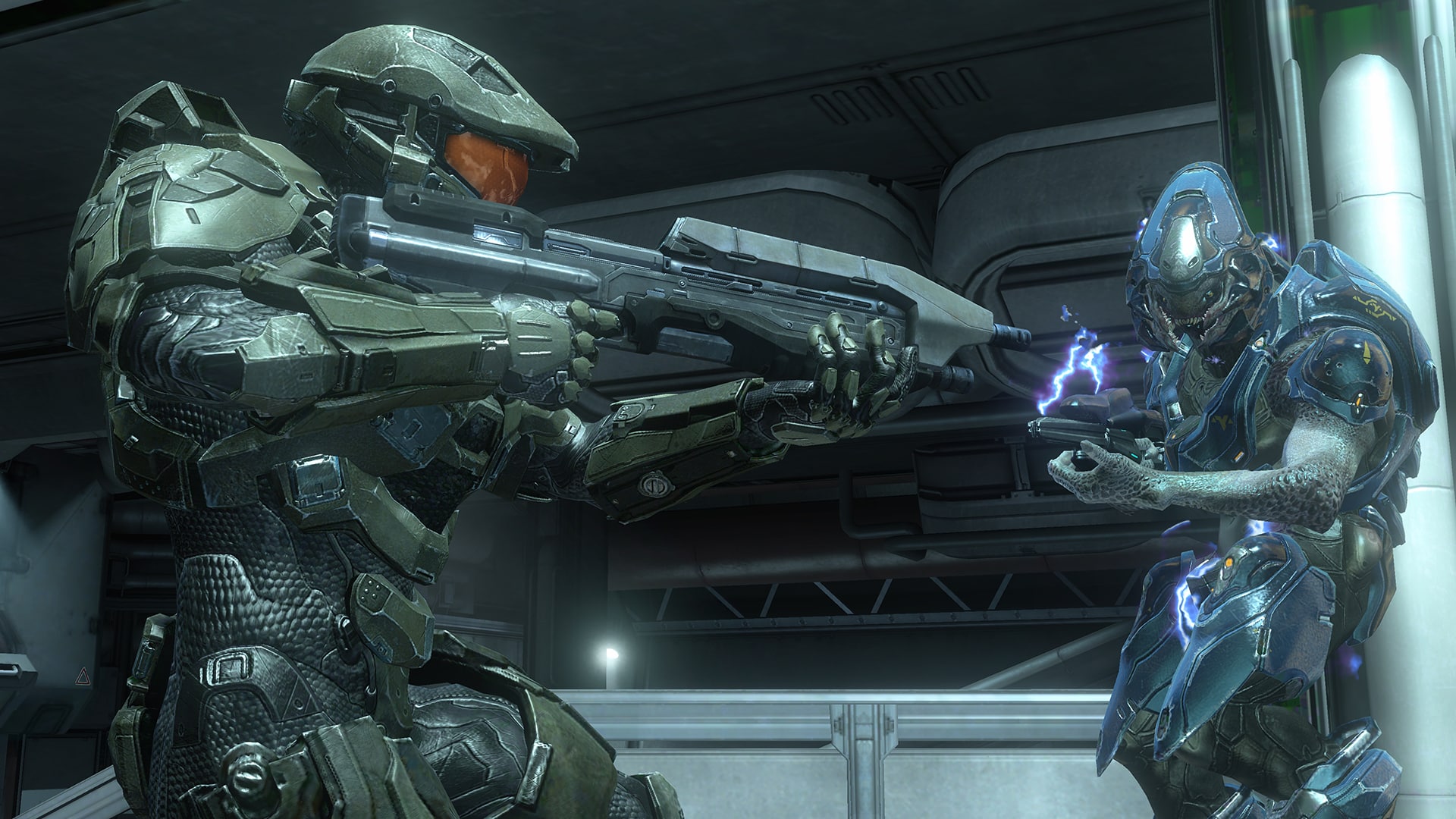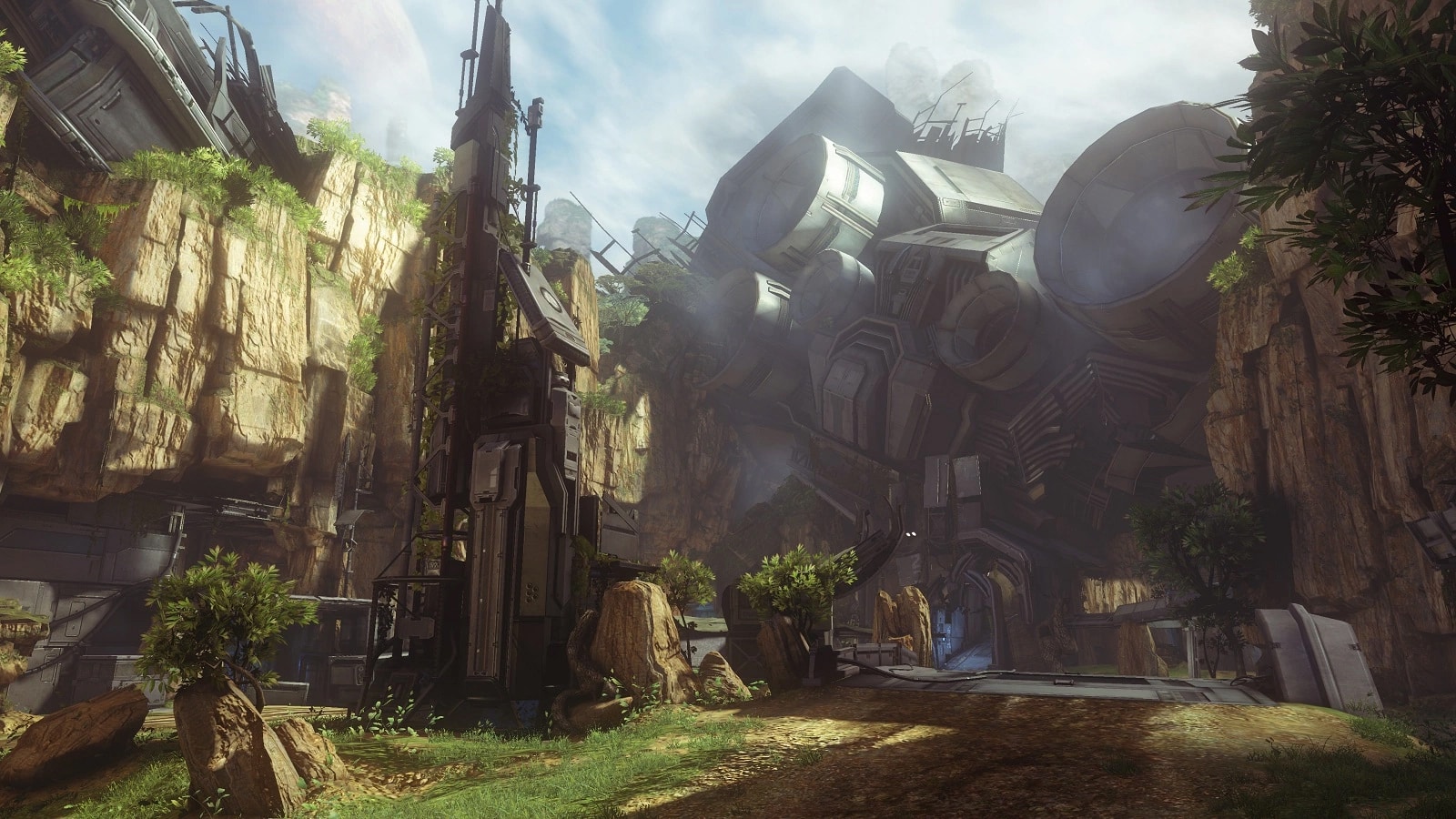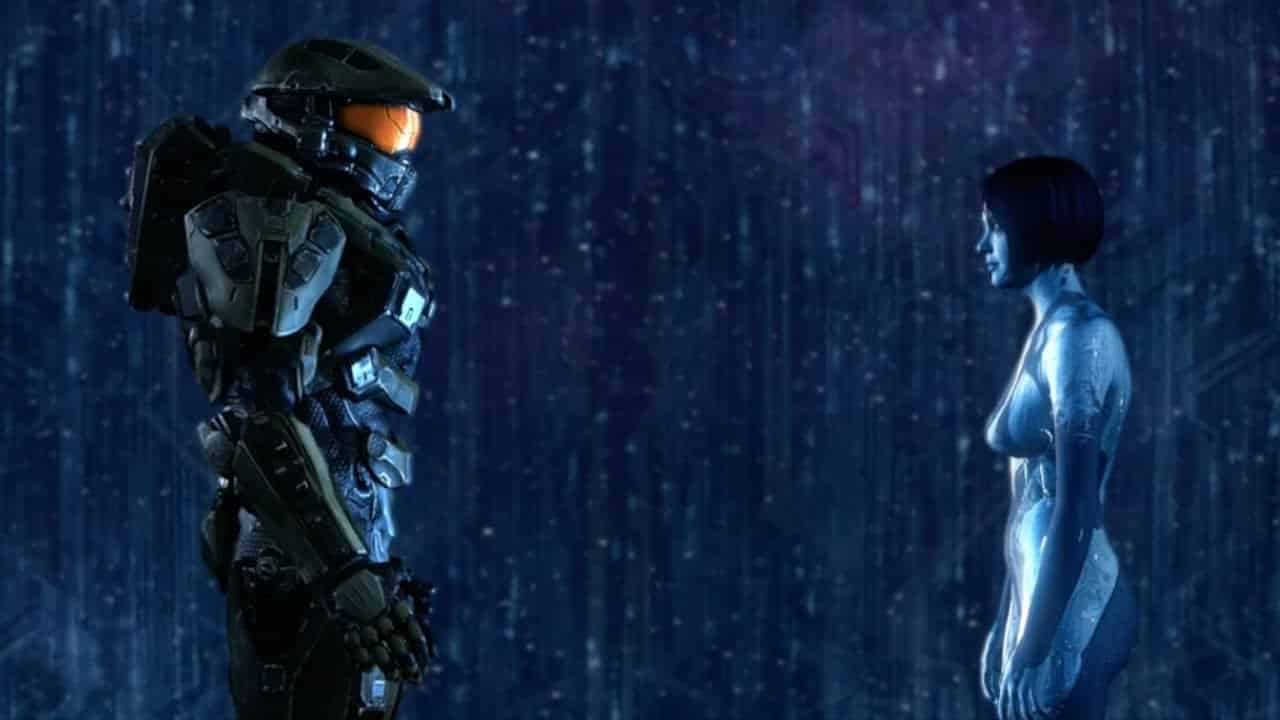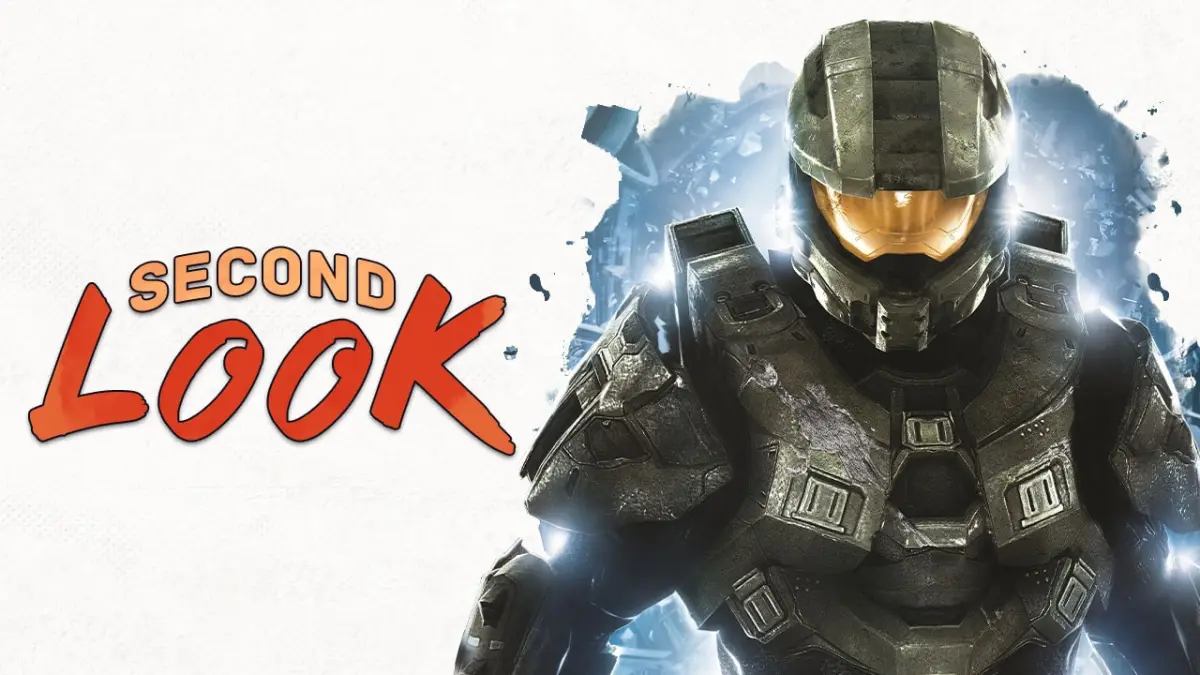343 Industries hasn’t exactly had a smooth go of it, picking up where Bungie left off with the Halo series. For the last two weeks we’ve dug into two of their biggest failures, but for our final week on the studio’s in-progress trilogy, I want to recognize their strongest success: Halo 4. While the game has increasingly been retconned and overshadowed (for the wrong reasons) by Halo 5’s ambitions or Spartan Ops’ aims at longevity, Halo 4 is good, actually.
Oh, you’re waiting for the hot take? Well, put simply, it should have been the end of the series, not the beginning of a new one. Halo 4 is protagonist Master Chief i.e. Spartan John 117 and his AI partner Cortana’s final journey together. They’re both weathered, tired, and being outmoded by a world that’s blazed ahead while Chief was stuck in a cryopod during Halo 3’s last minutes. Out of every narrative thread in the original Halo trilogy and extended canon, Chief, Cortana, and the mystery of the Forerunners who built the titular Halos were all that remained.

The Covenant remains but is scattered to the wind and beaten by the Arbiter. All other UNSC personnel we cared about died finishing that fight. All we had to go on — if you finished Halo 3 on Legendary difficulty — was an extra few seconds teasing a mysterious artificial planet in the distance. 343 Industries took it upon themselves to tie up Bungie’s loose ends. What happened to our lost heroes, and who were these ancient beings?
And you know, despite some plot contrivances, Halo 4 does a pretty solid job of explaining things: The Forerunners weren’t these perfect beings pushed to the brink like they’d been portrayed, but were instead a divided people with old demons best left buried. Chief’s not really prepared to stop being the hero of humanity, let alone faced with commanding officers who don’t care to grant him the freedom he’s used to. Cortana’s facing rampancy, thinking herself to death like all AIs do in the Halo universe. When the Forerunner extremist known as the Didact arises from his prison, eager to digitize humanity and rebuild Forerunner dominance throughout the known universe, our heroes are working on borrowed time and scarce resources.
Halo 4 had the benefit of releasing with all the input from Bungie’s own experiments with ODST and Reach. Dual-wielding is permanently dropped. The armor mod system where you could carry an extra ability is more refined this time, trimming out problematic mods like Armor Lock for dodge bursts and hard light shields that dramatically improve the flow of combat. They’re not as overt as Halo 5: Guardians’ parkour mechanics, layering onto the existing Halo framework rather than throwing a good chunk of it out the window.

The armory selection is a solid spread of weapons from every era of Halo. The Covenant has its most pronounced and varied arsenal ever, feeling like a fully specialized army with its array of explosive, mid-range, and long-range armaments. Additions to the UNSC demonstrate humanity’s upswing after Halo 3, with advanced power weapons like the SAW machine gun and remote detonator flourishing as they offer new tactical options. The new Promethean Forerunner enemies help round things out with a glut of new close- and mid-range weapons that encourage staying aggressive with multiple fire modes that incentivize staying mobile.
And yes, there’s sprinting — please, for the love of all that’s good in the world, can we get over this, internet? Halo 4’s sprinting is so situational and minimal at best that it’s effectively a brief nudge to get Halo’s gameplay moving along. If there’s one thing that’s damned too many games I’ve covered on this column, it’s people hyper-fixating on a single element as if that’s all it takes to make or break a game. This is rarely the case, and nowhere is this more evident than in Halo 4 because hot damn does it play well.
While as I said, the Prometheans could use more variety besides each of its three enemy types getting spikier bits on their backs and handed a different weapon, they’re a vast improvement over the Flood’s zombie hordes from the preceding trilogy. The Covenant legitimately feels disempowered and desperate, willing to throw everything it has at you as its last holdouts struggle to rebuff your onslaught. While humans are top dogs at the moment, that just shifts the internal politics to their side as the crew of the UNSC Infinity debate whether to take Chief and Cortana’s claims of the Didact’s threat seriously. All the while, our heroes are caught in the middle of this, just trying to find a way home to maybe prolong Cortana’s life.

I won’t call Halo 4’s narrative the best story in Halo. While a noble effort to explore themes of dementia through Cortana’s descent into rampancy and a critique of conservative mindsets within the UNSC, it never quite coalesces into what could be a stellar payoff to all the groundwork laid by the preceding games. Several characters go nowhere or were downsized mid-development to the point that they ceased to serve their original purpose. Yet, the game also has lines like this:
“I could give you over forty thousand reasons why I know that sun isn’t real. I know it because the emitter’s Rayleigh effect is disproportionate to its suggested size. I know it because its stellar cycle is more symmetrical than that of an actual star. But for all that, I’ll never actually know if it looks real. If it feels real.”
Jen Taylor and Steve Downes are at the top of their game as Cortana and Master Chief. For all the missteps in Halo 4’s overall story, the emotional core is impactful. You care about what’s happening, even if certain twists and turns scream of last-minute rewrites. There’s a beating heart to Halo 4 that was utterly absent in Halo 3, and it’s great to see. While nowhere near the highs of Halo 2 or ODST, Halo 4 understands that broad strokes alone don’t cut it for character development. The conclusion of Chief and Cortana’s arc is still profoundly impactful, leaving their story in the perfect place to stop.
“Before this is over, promise me you’ll figure out which one of us is the machine.”
I’m not saying Halo as a whole needed to end, but Halo 4 is the summation of all its predecessors. Everything you could be left wondering about is tied off with a bow. Humanity is given pause, reminding them to be wary of their own hubris. The Covenant are but ashes. The Prometheans are all silenced once more. Chief and Cortana pull off a final victory, at a high price.
As the final scene plays, Master Chief’s armor starts to be removed for the first time in years, each piece falling off with a thud as an old speech from the Didact plays out. He speaks of being forced to recede, to end. We see Chief stripped bare as the Didact goes on about the danger humanity poses to the Forerunners, how humans will obtain the mantle of responsibility and become the dominant force in the galaxy. As he does, for the only time in the series’s history, we see Chief’s eyes. Hollow, cold, tired, and exhausted. He’s spent, a shell made to fight a war that’s ended. Then cut to black.
Nothing about this warrants what would come to pass in Halo 5: Guardians’ final release. While concept art does paint a different picture for what Halo 5 could’ve been, I can’t think of a course where Chief is still the lead protagonist after this ending. His war is over, and it’s high time for him to leave the Spartan-II armor behind him.
That Halo 4 sold me so much on his emotional journey still sticks with me: This is a game where Master Chief gets to be funny, dramatic, and empathetic in a way we’ve never seen before. He’s outgrowing being the protagonist fans seemingly want him to be. I wish he’d gotten the chance to let someone else take the lead, for a change.
This in particular stands out when compared to Halo’s third-person contemporary, Gears of War. Marcus Fenix isn’t still chainsawing enemies apart anymore. Fenix’s son James and James’ friend Kait Diaz have taken the lead in the latest trilogy. Yet with Halo Infinite, the big selling point is how Master Chief is back to basics, somehow, after the utter mess of Halo 5: Guardians. I can’t help but see this as a potential step back.

The same can be said mechanically, as Halo 4 is arguably the last Halo game to truly feel like Halo. Each level is highly distinct, vehicle sections matter (one mediocre tank section notwithstanding), enemy compositions are refined and well-tuned to the theme of their respective section, and you never feel like things are being intentionally dragged out. No nine fights in a row with the same boss. No gratuitous enemy spam to make a room last longer. Arenas are purposefully built, directing players but still giving space to the combat sandbox.
There’s no part of Halo 4’s campaign I can hate. There are tiny things that irk me, like a useless new grenade, Spartan Palmer’s tired dry quips, and weapons being culled a tad too quickly to optimize performance — but as Halo sequels go, it’s a rock-solid time. If it’s Chief and Cortana’s last time together, then it’s one worthy of them.
Whether we needed more of their journeys after that is up for debate, but if nothing else, it demonstrates that a modern Halo game can be done right. And while Halo 4 might not have been the end it deserved to be, this is the end of our time talking on Halo. Next week, it’s a very different game series’s almost-finale.






Published: Sep 10, 2020 11:00 am